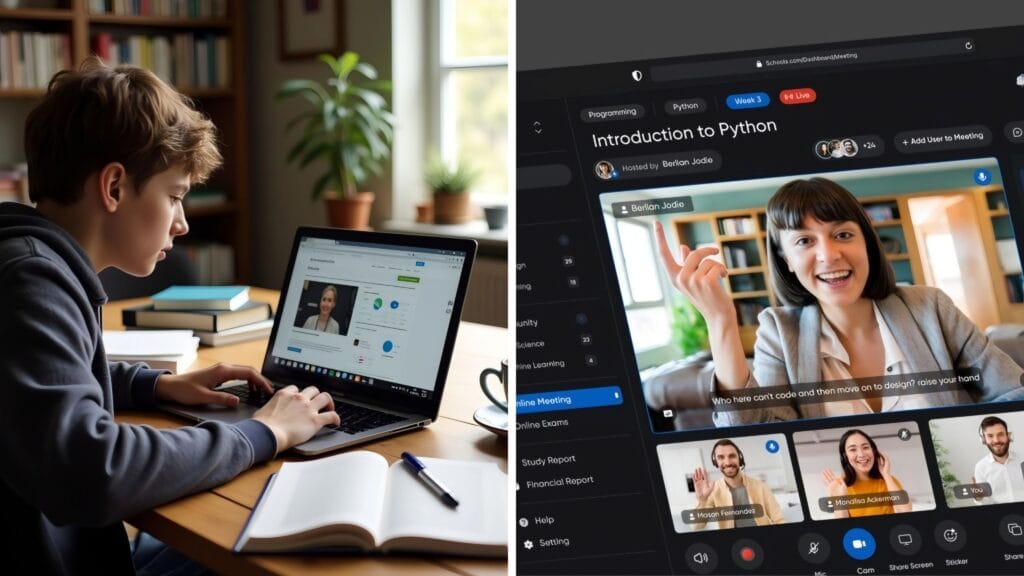
The e-learning industry has seen exponential growth over the past decade, fueled by technological advancements and an increasing demand for flexible learning solutions. Whether you’re an educator, an entrepreneur, or a subject matter expert, starting your own e-learning platform can be both a rewarding and challenging endeavor. This comprehensive guide will walk you through each step of the process, providing detailed insights and examples to help you create a successful e-learning platform.
Step 1: Define Your Niche and Target Audience
Identify Your Niche
The first step in creating an e-learning platform is to identify your niche. This involves determining the specific area of knowledge or skills you want to focus on. Here are some tips to help you choose your niche:
- Leverage Your Expertise: Choose a niche where you have substantial knowledge and experience. This will ensure you can provide value to your learners.
- Market Research: Analyze the market to identify gaps or underserved areas. Tools like Google Trends, Keyword Planner, and social media platforms can help you understand current trends and demands.
- Consider Your Passion: Select a niche you are passionate about to maintain motivation and enthusiasm throughout the development process.
Define Your Target Audience
Once you’ve identified your niche, it’s crucial to define your target audience. Consider factors such as:
- Demographics: Age, gender, occupation, education level, etc.
- Psychographics: Interests, values, and behaviors.
- Learning Preferences: Preferred learning styles and content types.
Example: Suppose you are a software developer with expertise in data science. You might choose to create an e-learning platform focused on teaching data science to beginners, targeting recent graduates or professionals looking to switch careers.
Step 2: Conduct a Competitor Analysis
Understanding your competition is essential for positioning your platform effectively. Here’s how to conduct a competitor analysis:
- Identify Competitors: Look for other e-learning platforms within your niche.
- Analyze Their Offerings: Examine the courses they offer, pricing models, and unique selling propositions (USPs).
- Evaluate User Experience: Sign up for a few courses to assess their platform’s usability, design, and content quality.
- Gather User Feedback: Read reviews and testimonials to understand their strengths and weaknesses.
Example: If your niche is data science education, competitors might include platforms like Coursera, edX, or DataCamp. Analyze their course structures, pricing, and user reviews to identify opportunities for differentiation.
Step 3: Develop a Business Model
Choosing a business model is crucial as it will dictate how you generate revenue. Common business models for e-learning platforms include:
- Subscription-Based: Users pay a recurring fee for access to all courses.
- Pay-Per-Course: Users purchase individual courses.
- Freemium: Offer free courses with the option to upgrade to paid content or features.
- Corporate Training: Partner with businesses to provide training solutions for their employees.
Example: If targeting individual learners, a subscription-based model like that of LinkedIn Learning might be suitable. For corporate clients, consider a B2B model similar to Pluralsight’s offerings.
Step 4: Create Engaging Content
Content is the heart of any e-learning platform. Follow these steps to create engaging and effective learning materials:
Course Design
- Outline Learning Objectives: Clearly define what learners will achieve by the end of each course.
- Structure Your Courses: Organize content into modules or units, each focusing on specific topics.
- Incorporate Assessments: Include quizzes, assignments, and projects to reinforce learning.
Content Creation
- Multimedia Elements: Use videos, audio, infographics, and interactive elements to cater to various learning styles.
- Quality Production: Invest in high-quality video and audio equipment for professional content production.
- Expert Contributors: Collaborate with industry experts to provide authentic insights and enhance course credibility.
Example: Khan Academy effectively utilizes short, engaging video lessons paired with practice exercises to reinforce concepts.
Step 5: Choose the Right Technology Platform
Selecting the right technology platform is critical for delivering a seamless learning experience. Here are some options:
Learning Management Systems (LMS)
- Moodle: An open-source LMS that is highly customizable.
- Canvas: Known for its user-friendly interface and robust features.
- Blackboard: Offers comprehensive tools for online teaching and learning.
Custom Development
- Hire Developers: If you have specific requirements, consider hiring developers to build a custom platform.
- Use Frameworks: Leverage frameworks like WordPress with LMS plugins (e.g., LearnDash) for a tailored solution.
Example: Codecademy developed a custom platform to offer interactive coding lessons, catering to their unique course delivery style.
Step 6: Implement Marketing and Promotion Strategies
Once your platform is ready, it’s time to attract learners through effective marketing strategies:
Build an Online Presence
- Website and SEO: Optimize your website for search engines to increase visibility.
- Social Media: Utilize platforms like Facebook, Instagram, and LinkedIn to engage with potential learners.
- Content Marketing: Start a blog or YouTube channel to share valuable insights and drive traffic to your platform.
Leverage Partnerships and Collaborations
- Affiliate Marketing: Partner with affiliates to promote your courses in exchange for a commission.
- Collaborations: Team up with influencers or industry leaders to expand your reach.
Example: Master Class uses a combination of social media advertising, influencer marketing, and affiliate programs to attract a wide audience.
Step 7: Launch and Gather Feedback
After implementing your marketing strategies, it’s time to launch your platform. Here’s how to ensure a successful launch:
- Beta Testing: Conduct a soft launch with a select group of users to gather feedback and make improvements.
- Monitor Performance: Use analytics tools to track user engagement, course completion rates, and other metrics.
- Collect Feedback: Encourage users to provide feedback through surveys or reviews.
Example: Udemy frequently gathers user feedback to refine their course offerings and platform features.
Step 8: Continuously Improve and Expand
To ensure long-term success, continuously improve and expand your platform:
- Update Content: Regularly update courses to reflect the latest industry trends and developments.
- Add New Courses: Expand your course catalog to cater to a broader audience.
- Enhance Features: Introduce new features like mobile apps, discussion forums, or certification programs.
Example: Coursera frequently expands its course offerings and partners with top universities to provide diverse learning opportunities.
Conclusion
Starting your own e-learning platform is an ambitious endeavor that requires careful planning, execution, and continuous improvement. By following this step-by-step guide, you’ll be well-equipped to create a successful platform that meets the needs of your target audience and stands out in the competitive e-learning landscape. Remember, the key to success lies in delivering high-quality, engaging content and providing an exceptional learning experience for your users. Good luck on your journey to revolutionize education and empower learners worldwide!


